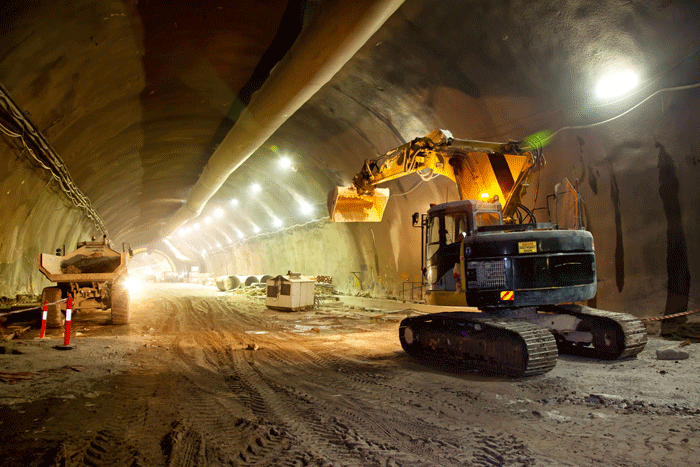Ignasi Vilajosana, CEO of operational intelligence specialist Worldsensing, explains how civil engineering can tap into the power of connected devices to turn data into actionable insights on challenging projects
By 2020 there will be 20 billion Internet-connected devices in the world, according to a report by market research company Gartner. As the Internet of Things (IoT) era develops, and devices become smaller, more accurate and more relevant to a wider range of sectors, there is an opportunity for civil engineering to drive greater operational efficiencies as a result of increased access to real-time data.
In fact, we’re already witnessing a new age of geotechnical and construction monitoring that allows engineers to analyse projects and existing structures remotely and gather information from a range of assets digitally and in real time.
In this article we will consider how, through the use of field-proven sensor technologies and wireless networks, civil engineering organisations are able to benefit from automated monitoring, from the construction phase to the ongoing maintenance and management of critical assets. We will then explore how the data generated can be used to deliver operational insights that improve productivity, quality management and project performance.
A shot in the arm
Data collection plays a vital and extensive role in construction. From monitoring water pressure changes during soil consolidation, and settlement during soil reclamation works, to assessing terrain deformation during tunnel construction, being able to accurately record measurements over vast working areas is essential to project success.
Data collection, up until now, has primarily been performed manually, with engineers taking key measurements while out in the field – a method that often impedes productivity. Manual data collection can be inaccurate, complex and timeintensive. Engineers not only have to contend with harsh environments and difficult- to-access sites, but there is also the risk that, due to a lack of processing speed, site conditions can change between readings, rendering data unreliable.
However, the emergence of the Industrial Internet of Things (IIoT) represents a significant shot in the arm for the civil engineering sector. The deployment of low-energy sensors to monitor an infrastructure’s condition and environment allows for a vast range of data to be gathered remotely, before being aggregated and visualised via a secure online dashboard. By effectively streamlining operations and enabling real-time access to information, the key advantages are clear to see: speed, accuracy and efficiency.
Eppenburg Tunnel
The construction of the Eppenberg Tunnel in Switzerland is a great example of the way IoT technologies are currently being used to enhance geotechnical monitoring processes. Designed to reduce congestion on one of the most transited railway routes in the country, the tunnel will have a length of 3.1km on completion.
Building this kind of infrastructure requires frequent and reliable geotechnical monitoring to detect any occurrences which may affect construction work. In order to ensure maximum efficiency and accuracy, the project team has deployed a wireless monitoring system, comprising 55 load anchors and 5 extensometers, controlled from outside the tunnel to gather readings from the geotechnical instruments that are being used during construction.
The low-consumption wireless sensor system delivers a highly efficient monitoring solution and sensors can be fully integrated with the various types of geotechnical instruments present. Crucially, it is the automated supervision of construction which means that the need for manual readings and control is virtually eliminated, greatly reducing the time and costs which might have previously been dedicated to supervisory tasks.
This ability to gather data quickly is also equally important when it comes to monitoring existing structures. Last year, a report by the American Road & Transportation Builders Association (ARTBA) found that almost one in ten bridges in the US are structurally deficient. This equates to 58,495 bridges out of the 609,539 bridges in the United States.
Measuring multiple factors such as vibration, inclination and tilt, and recording this information digitally can offer engineers significant assistance when it comes to improving the safety and maintenance of critical structures. Sensors can be deployed on a permanent basis, or moved on and off site each time a fresh set of data is required. New technology now offers ultra-long range solutions to facilitate remote readings in structural and geotechnical monitoring, some up to 15km (9 miles). This is particularly effective for civil engineering projects working on large geographical areas, such as pipelines, railways and tunnels, among others.
Operational intelligence
While automated processes that allow information to be gathered digitally can greatly reduce manual tasks and associated costs, conversely, the deployment of sensor technology across multiple aspects of a civil engineering project can sometimes result in ‘data overload’ from an abundance of unconnected data sets.
As a result, it is not the collation of data alone that delivers significant increases in productivity. Instead, it comes down to how that data is analysed and used.
Implementing an operational intelligence solution centralises the data; but instead of limiting analysis to merely the visualisation of this aggregated information through dashboards, operational intelligence looks to take this one a step further. In other words, organisations that successfully exploit operational intelligence capabilities feed real-time insight into the decision- making process, not only for immediate effect, but also to help develop predictive and preventative maintenance approaches that will ultimately enhance productivity.
Going back to our earlier example of tunnel construction, the pairing of wireless sensing technology with operational intelligence within such an environment demonstrates how data can be turned into actionable insight. The ability to leverage real-time data means engineers are better placed to establish socalled trigger levels for movement throughout the construction process.
Indeed, operational intelligence networks are even capable of providing warnings automatically through analysis of previous and existing data sets and machine learning capabilities. In the example of tunnel construction, if sufficient movement is detected, project teams can be alerted in ample time to make any necessary changes to the tunnelling procedure in order to counter such movement and ensure that construction continues as planned.
Similarly, operational intelligence can play a key role in helping civil infrastructure operators to form strategies for public safety and cultural heritage preservation. Authorities in the Italian city of Florence, for example, are using a network of geotechnical sensors connected to a software suite in order to monitor the famous Ponte Vecchio. Sensors located along the 32 metre length of the medieval structure provide real-time information on the stability of the bridge and nearby land. Should any unusual movement be detected, officials would be alerted and could act immediately to prevent any threat to public safety in a city that attracts some 16 million visitors each year.
Manual readings eliminated
For civil engineering organisations, the digitisation of assets undoubtedly promotes operational efficiency with automated supervision, all but eliminating the need for manual data readings. However, the true return on investment lies in having the platforms and processes in place to then manage this data.
The implementation of a relevant operational intelligence strategy to analyse and subsequently influence decisions has the potential to improve project performance and productivity. By using data to better control workforces, supplies and structural analysis, civil engineering organisations not only reduce the time and costs associated with projects, they also place themselves in a better position to evaluate risk and pre-plan responses.

If you enjoyed this article, subscribe to AEC Magazine for FREE






